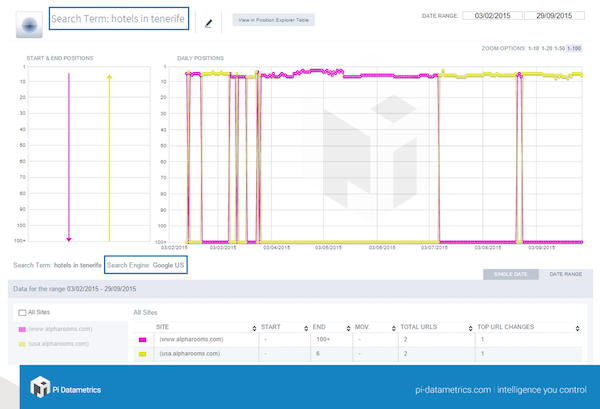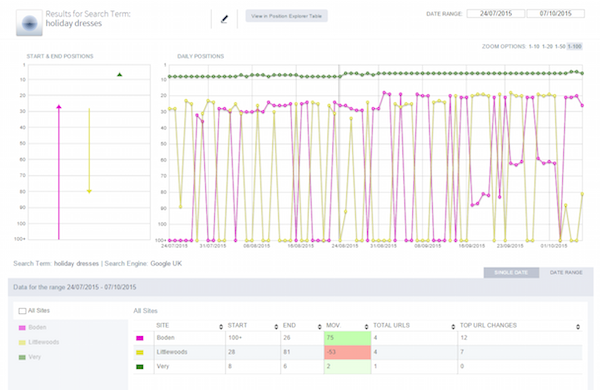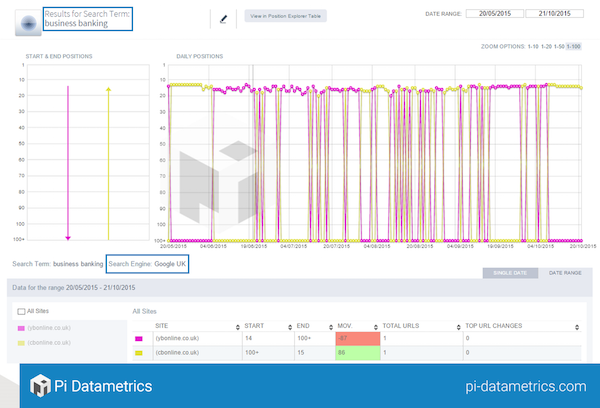How cannibalisation can harm your search rankings
In this post we look at how related domains are competing against each other for search rankings.
In this post we look at how related domains are competing against each other for search rankings.
In this post I’ll look at how related domains are competing against each other for search rankings. Some are sites from the same parent company, other international versions of sites.
In one way or another, they are cannibalising each other’s search rankings.
There are four types of cannibalisation which can effect websites: internal, sub-domain conflict, international conflict and semantic flux.
Here’s a brief explanation of each:
This is when your site has more than one page which has been optimized for the same search term.
Google will generally only show one result per site for each search term, so two pages on the site can end up damaging each other’s search rankings, or both will fail to rank consistently.
This is where pages on the same parent site are split into sub-domains, for example, a blog on a retailer’s site.
Pages from each can end up competing for the same search terms, as in the examples shown here from USA Today and the New York Times.
International versions of sites, if not implemented properly, can cause conflicts.
In many cases, content is the same or very similar, and so Google doesn’t know which version of the site to rank.
In the example below, Alpharooms’ US and UK sub-domains are competing against each other. As you can see, only one version ranks at any one time.

This often happens when two separate but similar websites are owned by the same company.
Often they’ll be offering the same products or services, just to different customers or markets, and will sometimes use the same platforms.
The search engines can see the relationship between these websites and will not know which one to rank.
If there is no clear canonical page on either site for that particular search term, the search engine will sometimes pick both.
In this situation, the sites will struggle to maintain consistent rankings and their results will fluctuate.
Here are some examples…
The three sites, all part of the Gap group, are competing against each other here for the term ‘winter coats women’.
They have the same URL structure and mimic each other’s performance.
These are the pages shown:

In this example, Google can see the relationship between the sites and has ‘decided’ to rank all of the sites at once. As a possible consequence of this, none are ranking very highly for the term.
This is an interesting example, as there is no relationship between the two websites, other than the fact that both sell holiday dresses.
Here’s the Littlewoods page (yellow) and the Boden page (pink) shown on the chart.
As we can see they seem to be knocking each other out of the SERPs.They do both rank at times, but not very highly.

What’s odd here is that we initially looked for an issue between Very and Littlewoods, two sites owned by parent company Shop Direct in the UK.
There wasn’t a problem though. Both Shop Direct sites (Very in green and Littlewoods yellow) are playing well together.
Google is ranking both and it appears to be Boden which is causing problems for Littlewoods.

Has Google incorrectly detected a relationship between the sites here?
There are other possible reasons:
Answers in the comments if you have a theory…
This is an example of conflict between international domains, the US and UK in this case.
The content is almost exactly the same and the pages are meant to be exclusive to each country, but both are ranking on Google.com.
The UK page (yellow) isn’t doing well, but it’s harming the US version (pink).

These two UK banks are both owned by the National Australia Bank Group.
Yorkshire bank’s search rankings are represented by the pink line, Clydesdale the yellow.
The rankings are swapping on a regular basis, so it’s pot luck which site will rank for the term ‘business banking’ on any given day.

Now, we know there’s a relationship between the two sites, but there’s another issue. Can you guess?
Here’s the Yorkshire Bank page:

And Clydesdale Bank’s…

Yes, the sites and content are the same. Only the names and colour schemes are different. It’s little wonder Google doesn’t know which one should rank.
Presumably the parent company decided that using the same templates and content would be a great way to save money. The key question is how much potential business is lost due to variable search visibility for this and other search terms.
National Australia Bank Group needs to decide whether this cost saving is worth the damage to the two sites’ search traffic.
The types of cannibalisation may vary, but these examples show how connected sites can harm each other’s search visibility.
The solutions to each are different, but its often a case of prioritising one site over another for particular target terms and sending the right signals to Google through linking and theming of pages.
One example is strange though. It appears that Google sees a link between Boden and Littlewoods and is therefore ranking only one site at a time.
As there is no link between the two at a company level, this is a mystery.